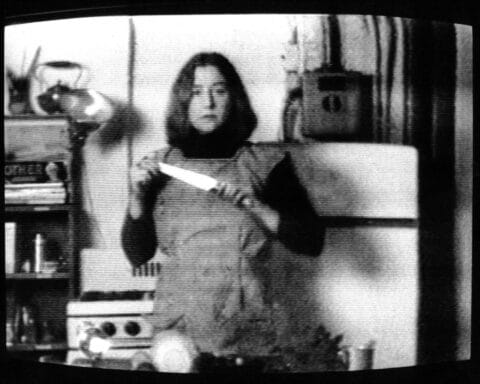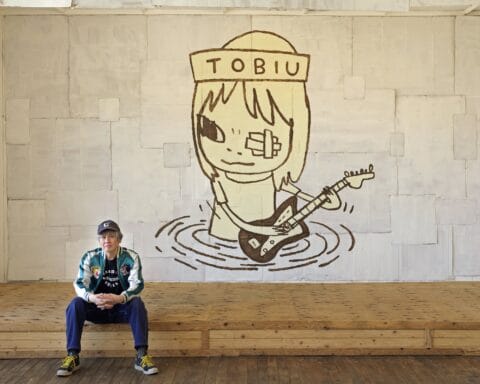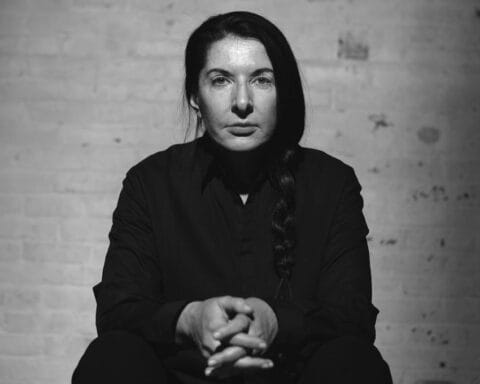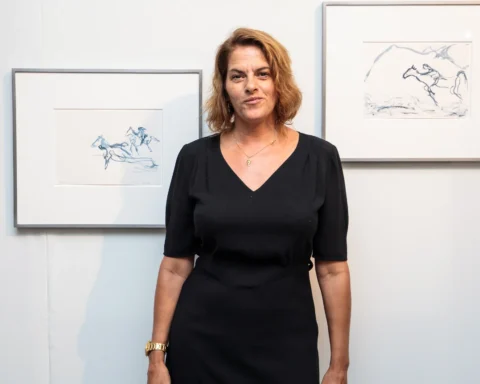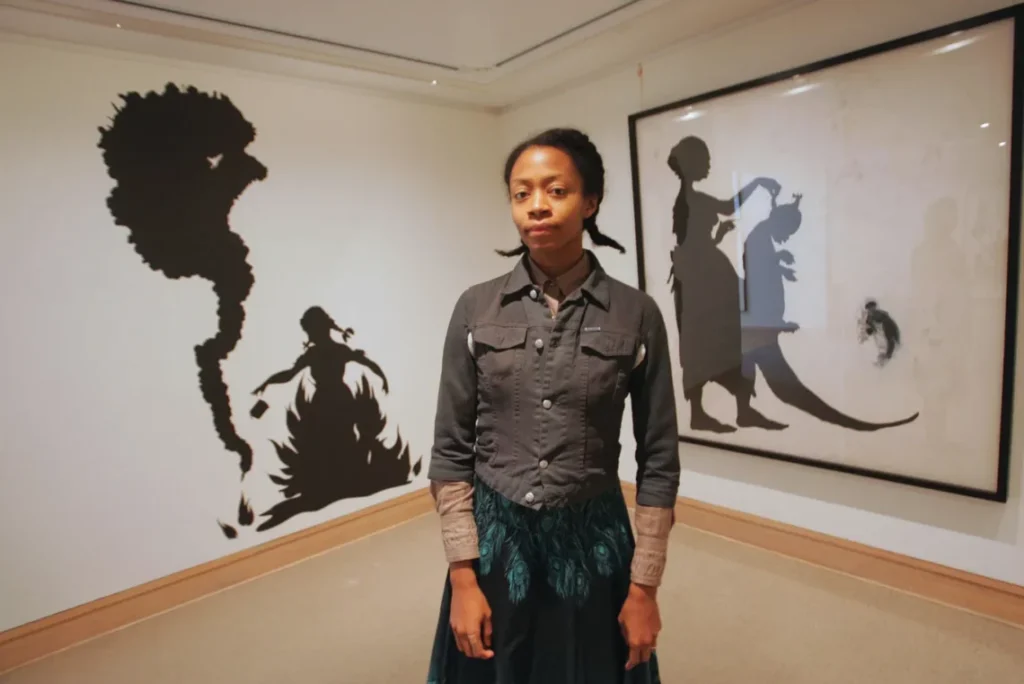Mona Hatoum, born in 1952 in Beirut, Lebanon, is an artist of Palestinian descent who has emerged as one of the most significant voices in contemporary art. Her formative years were shaped by the complexities of her heritage, particularly during a period marked by political turmoil and conflict in the region. Hatoum’s experiences as a Palestinian woman have had a profound impact on her artistic expression, informing both her thematic focus and her innovative use of materials.
In 1975, as civil war erupted in Lebanon, Hatoum was forced to leave her homeland, which significantly altered her life’s trajectory. She relocated to London, where she undertook her studies at the Byam Shaw School of Art and later at the Slade School of Fine Art. This move not only provided her with access to a broader artistic community but also placed her in a context where issues of displacement and identity could be explored through her work. Hatoum’s unique upbringing—oscillating between cultures and continents—has cultivated a distinctive voice that resonates universally, making her reflections on identity, memory, and space relevant to diverse audiences.
Hatoum’s art often engages with themes of exile, the body, and the domestic sphere, utilizing a range of materials from video to installation. These mediums allow her to create evocative spaces that evoke the experiences of loss, longing, and resilience. Her works frequently challenge viewers to contemplate the deeper meanings of home, belonging, and the politics of identity. By intersecting her Palestinian roots with her life in the diaspora, Hatoum not only invites viewers into her world but also encourages a broader dialogue about collective memory and the human experience.


Themes in Hatoum’s Work
Mona Hatoum’s artistic practice is profoundly interwoven with the themes of displacement, identity, and the concept of home. These central ideas not only resonate through her oeuvre but also provide a poignant commentary on her personal experiences as a Palestinian exile. The notion of displacement forms a critical lens through which her works can be examined, as they often reflect a world fractured by conflict and migration. Hatoum’s art captures the sense of being uprooted, evoking feelings that extend beyond her individual story to encompass a broader narrative of human struggle and resilience.
Identity, another key theme in Hatoum’s work, is intricately linked to her experiences of cultural fragmentation and belonging. She utilizes various mediums, including installation and video, to explore the complexities of identity in a globalized world. Her art encourages viewers to reflect on their own perceptions of self and others, challenging preconceived notions of cultural and national identities. In many instances, Hatoum’s works serve as a platform for dialogue, inviting audiences to engage with their own interpretations of identity within the context of societal constructs.
Furthermore, the concept of home emerges as a multifaceted theme in Hatoum’s artistic narrative. For her, home is not merely a physical space but a symbol laden with memories, both cherished and traumatic. She navigates the delicate balance between nostalgia and apprehension, often juxtaposing the comfort of domestic spaces with the tension of conflict. By employing everyday objects and domestic materials in her installations, Hatoum transforms familiar items into evocative symbols of her own experience of alienation. This transformation invites viewers to confront their perceptions of home and the emotional weight it carries in the context of displacement.
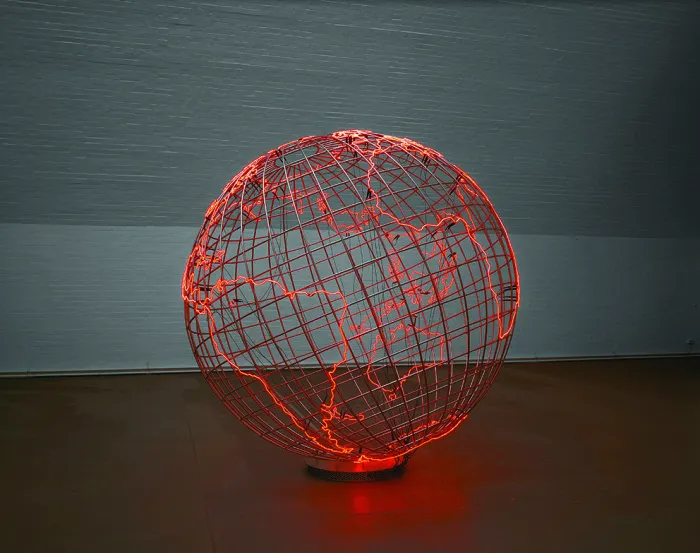
Materiality and Medium: The Language of Hatoum’s Art
Mona Hatoum’s artistic practice is distinguished by her innovative use of diverse materials and mediums, which serve as critical vessels for exploring themes of identity, space, and memory. By employing a variety of elements, from the organic to the industrial, Hatoum encapsulates the dichotomies inherent in her experiences and the world around her. Her installations and sculptures frequently juxtapose fragility and strength, prompting viewers to reconsider their perceptions of vulnerability and resilience.
In addition to traditional materials, Hatoum’s engagement with modern mediums, such as video art, allows her to enhance the narrative depth of her work. Her video installations often portray dislocation and displacement, reinforcing the themes of memory and identity that permeate her oeuvre. By utilizing moving images, she effectively constructs a dialogue between the viewer and the artwork, fostering a relationship that transcends the physicality of her installations.
Ultimately, Hatoum’s diverse materials and mediums are not merely aesthetic choices; they are integral to her artistic language. Through her careful curation of elements, she communicates complex ideas surrounding identity and the human experience. Each material, whether a delicate thread or a robust concrete block, plays a vital role in shaping the viewer’s understanding and emotional response to her work.

Iconic Works: A Closer Look
Mona Hatoum’s artistry is characterized by her ability to explore complex themes of identity, space, and memory. Among her iconic works, “Light Sentence,” “Home,” and “Measures of Distance” stand out for their profound emotional resonance and innovative use of materials.
“Light Sentence” is a striking installation that combines a metal cage with flickering lights. It evokes feelings of confinement and surveillance, reflecting the fragility of personal freedom in a global context. The interplay of light and shadow is masterfully crafted, prompting viewers to grapple with the concept of being watched versus the act of observation itself. This piece serves as a powerful metaphor for the emotional turmoil experienced by individuals displaced by conflict or personal turmoil, anchoring its significance within Hatoum’s pursuit of identity and belonging.
In “Home,” the artist transforms familiar domestic objects into unsettling symbols of displacement and alienation. This installation evokes feelings of nostalgia while simultaneously confronting the viewer with the stark realities of migration and loss. Hatoum’s use of domesticity contrasts with the underlying tension of memory and belonging, inviting reflection on how spaces can evoke both comfort and discomfort. This duality forms a critical aspect of her broader oeuvre, as she navigates the fine line between safety and vulnerability.
“Measures of Distance” further emphasizes Hatoum’s exploration of identity through the lens of personal and collective memory. This poignant video installation features a series of intimate conversations between the artist and her mother, juxtaposed with imagery of the artist’s homeland. The work challenges viewers to contemplate the significance of familial ties and cultural dislocation, as Hatoum illustrates the emotional weight of longing and separation. By blending personal narrative with broader themes of diaspora, Hatoum skillfully articulates the complexities of navigating one’s identity in a fragmented world.


The Role of Space in Hatoum’s Art
Mona Hatoum’s artistic approach intricately weaves the concept of space into the fabric of her installations. Space in Hatoum’s work goes beyond mere physical dimensions; it becomes a powerful medium for conveying complex themes such as identity, memory, and displacement. Through innovative use of space, she engages her audience in a dialogue that challenges their perceptions and experiences. Hatoum effectively transforms conventional notions of space, inviting viewers to navigate her installations in a manner that evokes emotional and intellectual responses.
One of the key aspects of Hatoum’s interaction with space is her ability to create immersive environments. In her installations, she often employs the concept of negative space and absence, prompting the audience to reflect on what is not present, alongside what is. For instance, her iconic piece, “Map,” utilizes the form of a Middle Eastern map, constructed from intricate glass spheres that suggest fragility and peril. The arrangement of space within this installation serves not just as a representation of geography but also as a poignant reminder of the fragility and vulnerability associated with cultural identity. Viewers are compelled to consider how their own experiences of displacement echo in the spaces she constructs.
Ultimately, the role of space in Mona Hatoum’s art is not merely foundational but instrumental in fostering a deeper engagement with her themes. The innovative spatial arrangements that she creates encourage audiences to actively participate in the experience, facilitating profound reflections on identity and memory.

Political Context and Activism
Mona Hatoum’s artistry extends beyond mere aesthetics; it is deeply intertwined with a political consciousness that addresses critical global issues. Born in Beirut and later relocating to London during the Lebanese Civil War, her work is profoundly influenced by her experiences of displacement and the complexities of identity. Hatoum’s art often reflects the tumultuous themes of war, migration, and human rights, serving as both a commentary and a call to action regarding the societal issues that affect marginalized communities worldwide.
War and conflict serve as recurring motifs in Hatoum’s oeuvre. Her installations often evoke the fragility of human existence in the face of violence and political chaos. One striking example is “Home” (1999), in which her childhood memories are juxtaposed with the reality of war, creating a haunting reflection on how spaces we hold dear can turn into sites of trauma. Through her work, Hatoum critiques the notion of home as a safe haven, highlighting the instability that war imposes on individuals and families alike.
Moreover, her exploration of migration underscores the human experience of displacement. By examining the paths of refugees and migrants throughout her art, Hatoum invites viewers to contemplate the broader societal implications of such journeys. Her piece, “Measures of Distance” (1988), illustrates the emotional and psychological barriers that come with separation, drawing attention to the need for greater empathy and understanding in a world marked by forced migration.
Hatoum’s activism is not limited to individual pieces but resonates throughout her entire body of work. Her art becomes a platform for social critique, navigating through the interwoven narratives of identity, space, and memory. As viewers engage with her installations, they are prompted to confront uncomfortable truths about the world we inhabit, fostering a dialogue on urgent humanitarian concerns. The political undertones in Hatoum’s art ultimately position it as a vital entity for change and awareness in contemporary society.


Influences and Artistic Resonance
Mona Hatoum is an artist whose work resonates profoundly with the themes of identity, space, and memory. Several influences have significantly shaped her artistic vision, allowing her to create poignant and thought-provoking pieces. One of the critical influences on her work is her background and the experiences that come with displacement. Born in Beirut to a Palestinian family, Hatoum’s experiences during the Lebanese Civil War have left an indelible mark on her perspective. This historic context has not only informed her exploration of identity but also her artistic expressions within the framework of memory.
Hatoum’s work reflects a convergence of various art movements, drawing inspiration from minimalism, conceptual art, and installation practices. Artists like Anne Hamilton and Damien Hirst have shared similar conceptual frameworks, which focus on the sensitivity of the human experience, the fragility of life, and the role of space in shaping our identities. This artistic resonance allows Hatoum’s pieces, such as her installations featuring domestic objects, to convey deeper narratives about home and alienation. By integrating elements of the everyday with a strong conceptual underpinning, she invites viewers to engage on both an intellectual and emotional level.
Furthermore, the cultural movements of the late 20th and early 21st centuries play a pivotal role in shaping her artistry. Feminism and post-colonial theory, for example, inform her engagement with issues of gender, power, and belonging. Hatoum’s works often evoke the duality of comfort and discomfort in relation to bodily and spatial boundaries, urging the audience to confront their perceptions of identity. Through a keen awareness of socio-political contexts, she creates art that transcends individual experience, fostering a collective dialogue about shared vulnerabilities and histories.

Critical Reception and Impact
Mona Hatoum’s artistic journey has garnered significant attention and acclaim within the art community, establishing her as a pivotal figure in contemporary art. Her works, characterized by an innovative use of space and materials, invite critical discourse that transcends traditional boundaries. Critics have consistently praised her ability to articulate complex themes such as identity, displacement, and memory through her installations and performances. Renowned publications highlight her capacity to challenge viewers’ perceptions and provoke thought, making her a prominent voice among contemporary artists.
Hatoum’s impact on contemporary art is further evidenced by her inclusion in significant exhibitions around the globe. Notable venues such as the Tate Modern in London, the Centre Pompidou in Paris, and the Venice Biennale have showcased her work, amplifying her influence across diverse audiences. These exhibitions not only celebrate her unique perspectives but also contribute to the ongoing conversation surrounding themes of globalization, migration, and human rights, thus positioning her as an essential contributor to current social narratives.
In recognition of her contributions to the art world, Mona Hatoum has received numerous awards, reflecting her status as a trailblazer for women and artists from varied backgrounds. Her achievements serve to inspire a new generation of creators, particularly those who grapple with issues of identity and cultural displacement. By addressing these themes, her work resonates with a broad spectrum of individuals, reinforcing the importance of representation within the arts.
Moreover, Hatoum’s critical reception demonstrates how her artistic explorations have paved the way for meaningful discussions on the intersection of personal and collective experiences. As she continues to innovate and redefine artistic practices, her legacy remains a testament to the transformative power of art as a medium for critical engagement and identity exploration.
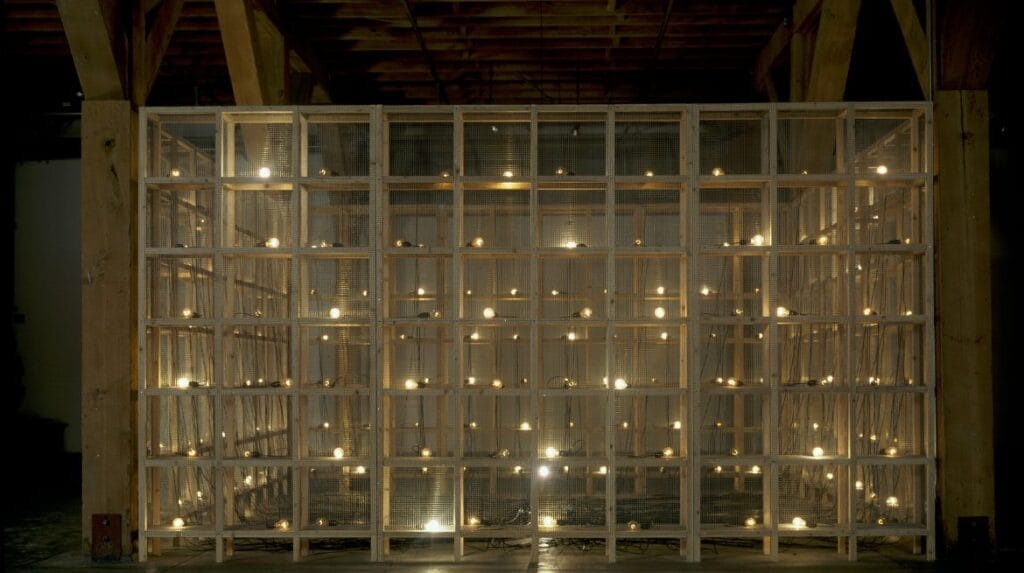
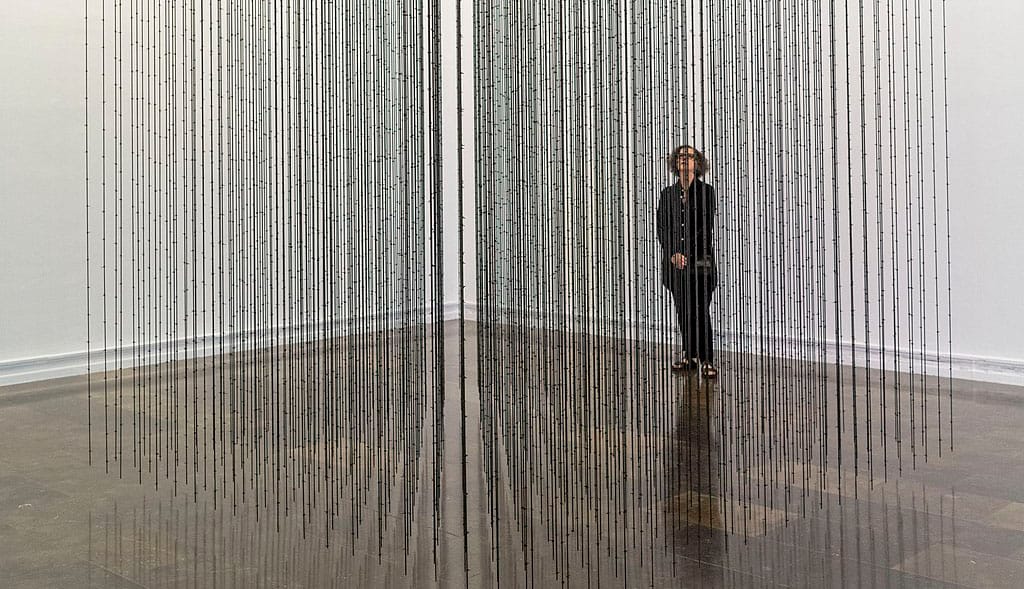
Mona Hatoum’s Everlasting Visual Impact
Mona Hatoum’s artistic journey stands as a powerful testament to the intricate relationship between identity, space, and memory. Throughout her career, she has managed to articulate the complexities of the human experience, drawing audiences into a profound dialogue about what it means to belong in a continuously shifting cultural landscape. Her works frequently confront themes of displacement and alienation, evoking intense emotional responses that encourage viewers to reflect on their own identities and experiences.
Hatoum’s art transcends mere visual appeal, delving deep into the heart of societal issues. By intertwining personal narrative with broader political discourses, she has consistently challenged prevailing perceptions of identity. This exploration of belonging is particularly resonant in a globalized world where boundaries frequently blur and reshape. As Hatoum navigates varied mediums—from installations to video art—she compels us to confront uncomfortable truths about our lives and the spaces we inhabit.
Moreover, her ability to transform everyday objects into poignant symbols of memory and loss further enriches her artistic legacy. This transformative practice invites viewers to reconsider the significance of their own environments and the memories they carry. Hatoum’s emphasis on the fragility and resilience of identity encourages ongoing discussions around the human condition, particularly in contexts of conflict and migration.
In conclusion, Mona Hatoum’s enduring legacy is not just a reflection of her innovative artistry but a profound commentary on the universal themes of identity, space, and memory. Her work continues to inspire a critical examination of how we navigate our worlds, urging us to embrace the complexities of who we are. As we reflect on her contributions, it is essential to recognize the lasting impact of her art on contemporary discourse and its ability to resonate in our lives. Through her powerful lens, we are reminded of the importance of understanding our shared humanity amidst diverse experiences.
